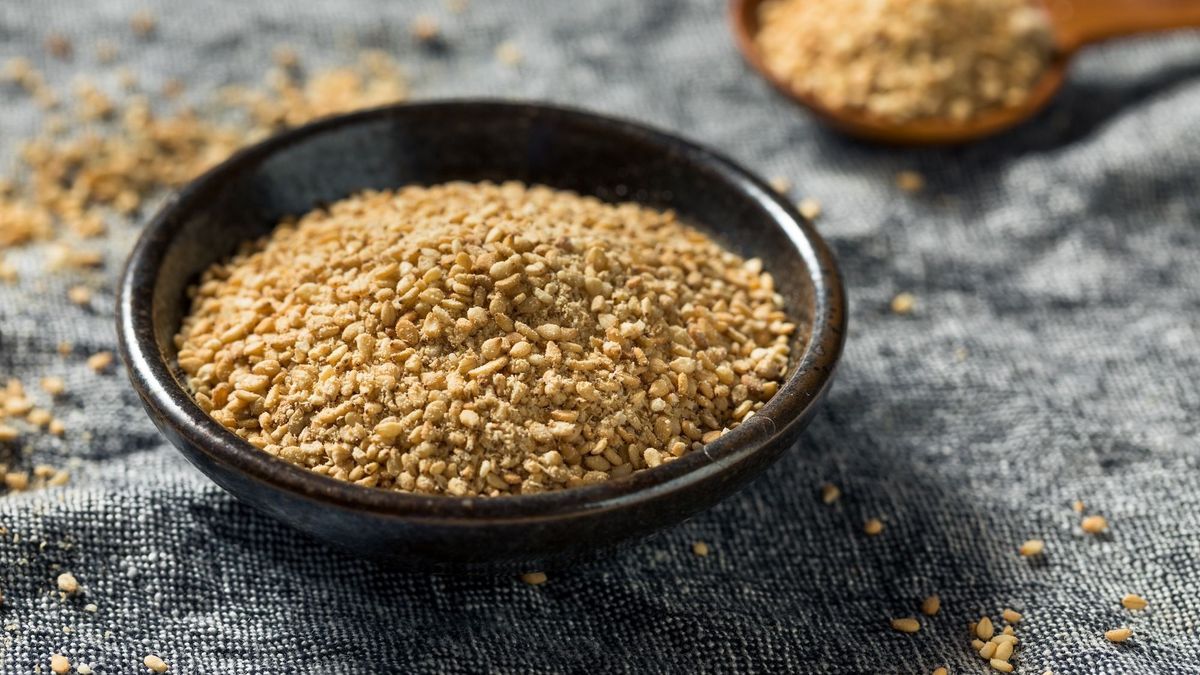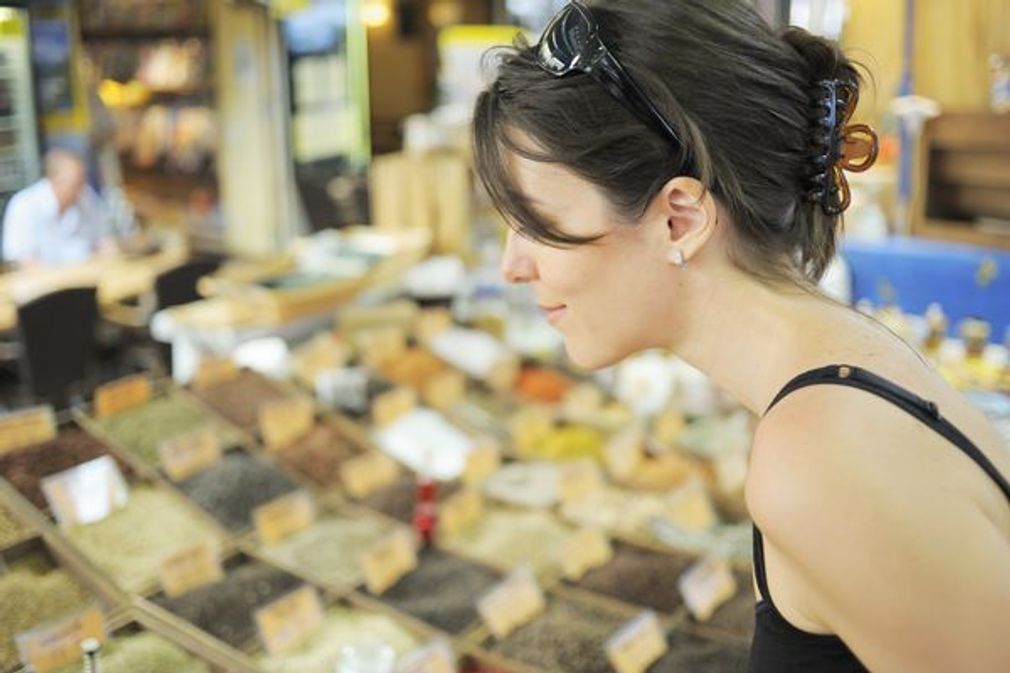
Used since ancient times in Asia, gomasio is a Japanese condiment which is an original and healthy alternative to table salt. Composed of crushed sesame seeds and fleur de sel, it can be sprinkled on meat dishes, soups or raw vegetables to stimulate the flavors. What are the health benefits of this condiment? How to prepare it yourself? How many calories does it contain? The answers from Raphaël Gruman, dietician-nutritionist.
Composition: What is gomasio?
Contraction of the words “goma” which means “sesame” in Japanese and “shio” for “salt”, gomasio, also called gomashio, is, as its name suggests, a mixture of coarsely crushed sesame seeds and salt. marine. Traditionally, the sesame used is whole (the seed coat is preserved) and the salt is unrefined. Gomasio helps enhance the flavor of dishes without excessively increasing the sodium content. Its use is ancestral, since the first traces of its consumption date back more than 7,500 years in India. It has since become an integral part of Asian culinary traditions and in particular Japanese cuisine.
What does gomasio taste like?
Gomasio has a delicate taste of toasted hazelnut, the result of roasting sesame seeds, enhanced by the discreet presence of salt as a flavor enhancer. Its coarsely ground texture brings consistency and crunch to preparations, particularly pleasant on raw vegetables, in soups or even in omelettes.
Use: Does gomasio replace salt?
“Gomasio can be an interesting alternative to salt, for all those who must limit their consumption.” indicates Raphael Gruman. Although it contains 5%, it is sesame which largely dominates its composition (95%), allowing it to provide flavors and aromas, while limiting the sodium intake.
“Be careful though, gomasio must replace salt and not in addition to salt! For example, you can replace a pinch of salt in your dish with a pinch or two of gomasio.” sums up the nutritionist.
Recipe, ingredients: how to prepare homemade gomasio?
Two ingredients are enough to prepare homemade gomasio: sesame seeds and fleur de sel or sea salt. The usual proportion is 95% sesame to 5% salt. If they are not already, the sesame seeds should be roasted in a pan, stirring constantly to prevent them from burning. They are ready when they start to pop and give off a nutty smell. Secondly, these roasted seeds must be ground with the fleur de sel in a mortar or blender until you obtain a coarsely ground texture.
Variations of this basic recipe exist, adding dried seaweed, herbs or even spices (turmeric, garlic, semolina, Cayenne pepper, black pepper, etc.).
Comment conserve gomasio?
Once prepared, gomasio must be stored in an airtight container to preserve its flavors and nutritional properties. Refrigerator storage is recommended, but it can be stored in a cool, dry place, away from light and heat.
Indeed, like any oilseed, sesame can go rancid over time, especially when it is crushed, hence the importance of storing it in a cool place. By following these tips, gomasio can be stored without problem for several weeks or even months.
What are the benefits of gomasio condiment?
The health benefits of gomasio are like those of sesame, an oilseed rich in nutritional qualities. “Sesame is very rich in polyunsaturated fatty acids, known for their benefits on the health of the cardiovascular system. It is also rich in calcium, potassium and magnesium, which gives gomasio remineralizing properties.” sums up the nutritionist.
When used as a substitute for table salt by people with hypertension, it helps limit sodium intake and indirectly regulate blood pressure.
How many calories in gomasio?
The caloric value of gomasio is quite high, like its main ingredient, sesame. This in fact belongs to the category of oilseeds, which as their name suggests, can be used to make oils – “oleum” meaning “oil” in Latin. On average, 100g of gomasio contains approximately 560 to 620 kcal. The majority of these calories come from lipids, which represent approximately 50% of the product. Remember, however, that these are “good “lipids, that is to say unsaturated fatty acids, beneficial for cardiovascular health.
“Although it is very energetic in absolute terms, it is always advisable to reduce the caloric value of a food to the quantities usually consumed. However, gomasio is a condiment, which is used in small quantities, for an ultimately reasonable calorie intake.” recalls Raphaël Gruman. A teaspoon of gomasio (around 5g) provides only around thirty calories.
Are there any dangers in consuming too much gomasio?
To eat in balance and cover all of our needs for nutrients, vitamins and minerals, we must eat as varied as possible and avoid excesses, whatever they may be. “Excessive consumption of gomasio can be the cause of too high a sodium intake, with a risk of high blood pressure, widely implicated in the occurrence of heart disease and stroke.“recalls the dietitian.
Its high lipid content makes gomasio a food with a high caloric density. Excess consumption risks disrupting the effectiveness of a possible weight loss diet, or even causing weight gain for very heavy consumers.
Finally, sesame is a recognized allergen that can cause potentially serious reactions. People who are allergic to it should therefore of course avoid consuming gomasio.
Seaweed Gomasio: what is it?
Also known as algomasio, seaweed gomasio is a variation of traditional gomasio enriched with seaweed. “It is usually nori seaweed which is added to sesame and salt. In addition to their characteristic marine flavor, they provide dietary fiber and minerals, particularly iodine and zinc.” underlines Raphaël Gruman.
Algomasio is particularly appreciated by vegetarians or vegans for its contribution in iodine, a nutrient often deficient in these diets.

